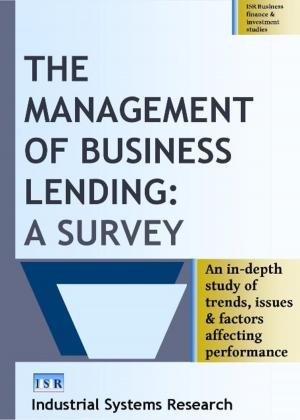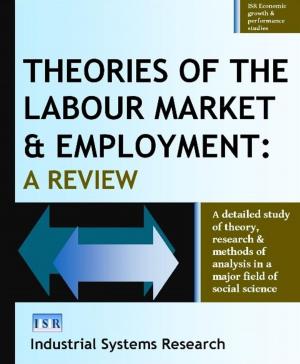The Wealth of Nations
A Translation into Modern English
Business & Finance, Economics, Free Enterprise, Public Finance, Economic Development| Author: | Adam Smith | ISBN: | 9780906321706 |
| Publisher: | Industrial Systems Research | Publication: | May 23, 2015 |
| Imprint: | Language: | English |
| Author: | Adam Smith |
| ISBN: | 9780906321706 |
| Publisher: | Industrial Systems Research |
| Publication: | May 23, 2015 |
| Imprint: | |
| Language: | English |
Adam Smith's The Wealth of Nations is the great pioneering study of economic growth and performance.
When first published in 1776, the factory-based Industrial Revolution was only just getting underway. However, there had been steadily rising production and incomes in Britain, the North American colonies, Holland and other countries since at least the late 17th century.
Smith uses basic theory, observation and documentary sources to analyze the nature and causes of economic advancement in general.
The book is lengthy and wide-ranging. It examines the contributions to production of labour, land and capital. It explains the economic importance of large buoyant markets and industrial specialization. It also shows that national wealth does not depend on economic factors alone. For example, the favourableness or otherwise of the political-legal environment for industry and commerce is everywhere a major influence on national prosperity.
This is a moderately abridged current language version of the book – essentially translating the work into modern English to improve its readability and understandability. The translation is substantive but retains literalness and original word order and grammar as far as possible.
CONTENTS:
Editorial Foreword
Author’s Introduction
BOOK 1: INDUSTRIAL PRODUCTION, DISTRIBUTION AND INCOMES
Chapter 1: Industrial Specialization
Chapter 2: The Origins Of Industrial Specialization
Chapter 3: The Extent Of The Market Limits Specialization
Chapter 4: The Origins And Use Of Money
Chapter 5: The Real Economic And Nominal Monetary Prices Of Goods
Chapter 6: Supply Prices, Production Costs And Incomes
Chapter 7: The Natural And Market Prices Of Products
Chapter 8: The Wages Of Labour
Chapter 9: The Profits Of Capital
Chapter 10: Wages And Profits In Different Trades
Chapter 11: The Rent Of Land
BOOK 2: CAPITAL – ITS NATURE, ACCUMULATION AND USES
Chapter 1: Different Types Of Capital
Chapter 2: Monetary Capital
Chapter 3: The Accumulation Of Capital
Chapter 4: Capital Lent At Interest
Chapter 5: The Different Uses Of Capital
BOOK 3: NATIONAL ECONOMIC GROWTH AND PERFORMANCE DIFFERENCES
Chapter 1: The Natural Process Of Economic Growth
Chapter 2: The Discouragement Of Agriculture In Europe After The Fall Of The Roman Empire
Chapter 3: Urban Growth And Manufacturing After The Fall Of The Roman Empire
Chapter 4: The Contribution Of Urban Industry And Commerce To Rural Economies
BOOK 4: POLITICAL-ECONOMIC THEORIES AND POLICIES
Chapter 1: The Mercantilist Political Economic Model
Chapter 2: Restrictions On Importing Goods Capable Of Domestic Production
Chapter 3: Restrictions On Imports To Correct So-called Disadvantageous Trade Balances
Chapter 4: Tax Refunds On Exports
Chapter 5: Export Subsidies
Chapter 6: Treaties Of Commerce
Chapter 7: Colonies
Chapter 8: The Mercantilist System – Conclusions
Chapter 9: The Agricultural Political Economic Model – The Notion Of Land As The Great Source Of National Wealth
BOOK 5: GOVERNMENT FINANCES – PUBLIC EXPENDITURE, TAXATION AND BORROWING
Chapter 1: Government Expenditure
Chapter 2: The Sources Of General Public Revenues
Chapter 3: Public Debts
Adam Smith's The Wealth of Nations is the great pioneering study of economic growth and performance.
When first published in 1776, the factory-based Industrial Revolution was only just getting underway. However, there had been steadily rising production and incomes in Britain, the North American colonies, Holland and other countries since at least the late 17th century.
Smith uses basic theory, observation and documentary sources to analyze the nature and causes of economic advancement in general.
The book is lengthy and wide-ranging. It examines the contributions to production of labour, land and capital. It explains the economic importance of large buoyant markets and industrial specialization. It also shows that national wealth does not depend on economic factors alone. For example, the favourableness or otherwise of the political-legal environment for industry and commerce is everywhere a major influence on national prosperity.
This is a moderately abridged current language version of the book – essentially translating the work into modern English to improve its readability and understandability. The translation is substantive but retains literalness and original word order and grammar as far as possible.
CONTENTS:
Editorial Foreword
Author’s Introduction
BOOK 1: INDUSTRIAL PRODUCTION, DISTRIBUTION AND INCOMES
Chapter 1: Industrial Specialization
Chapter 2: The Origins Of Industrial Specialization
Chapter 3: The Extent Of The Market Limits Specialization
Chapter 4: The Origins And Use Of Money
Chapter 5: The Real Economic And Nominal Monetary Prices Of Goods
Chapter 6: Supply Prices, Production Costs And Incomes
Chapter 7: The Natural And Market Prices Of Products
Chapter 8: The Wages Of Labour
Chapter 9: The Profits Of Capital
Chapter 10: Wages And Profits In Different Trades
Chapter 11: The Rent Of Land
BOOK 2: CAPITAL – ITS NATURE, ACCUMULATION AND USES
Chapter 1: Different Types Of Capital
Chapter 2: Monetary Capital
Chapter 3: The Accumulation Of Capital
Chapter 4: Capital Lent At Interest
Chapter 5: The Different Uses Of Capital
BOOK 3: NATIONAL ECONOMIC GROWTH AND PERFORMANCE DIFFERENCES
Chapter 1: The Natural Process Of Economic Growth
Chapter 2: The Discouragement Of Agriculture In Europe After The Fall Of The Roman Empire
Chapter 3: Urban Growth And Manufacturing After The Fall Of The Roman Empire
Chapter 4: The Contribution Of Urban Industry And Commerce To Rural Economies
BOOK 4: POLITICAL-ECONOMIC THEORIES AND POLICIES
Chapter 1: The Mercantilist Political Economic Model
Chapter 2: Restrictions On Importing Goods Capable Of Domestic Production
Chapter 3: Restrictions On Imports To Correct So-called Disadvantageous Trade Balances
Chapter 4: Tax Refunds On Exports
Chapter 5: Export Subsidies
Chapter 6: Treaties Of Commerce
Chapter 7: Colonies
Chapter 8: The Mercantilist System – Conclusions
Chapter 9: The Agricultural Political Economic Model – The Notion Of Land As The Great Source Of National Wealth
BOOK 5: GOVERNMENT FINANCES – PUBLIC EXPENDITURE, TAXATION AND BORROWING
Chapter 1: Government Expenditure
Chapter 2: The Sources Of General Public Revenues
Chapter 3: Public Debts















